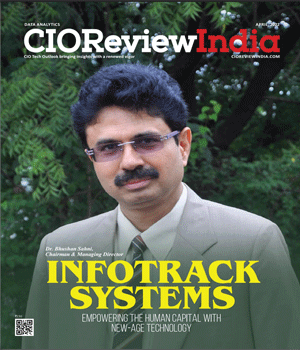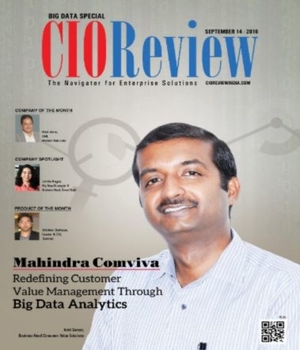
Data-Driven Predictive Technologies
Pankaj Parimal, Head of Launch & Change Management, Hella Automotive Mexico, S.A. de C.V., Mexico, North America. | Friday, 10 June 2022, 13:45 IST

It's no more Dream to predict the future but a scientific reality, beyond the Astrologer Technique and much more accurate, knocking at the Door.
What are data-driven predictive Technologies? In simple terms, “Predictive Technologies uses historical & live data to predict future events. Typically, historical data is used to build a mathematical model that captures important trends. That predictive model is then used on current data to predict what will happen next, or to suggest actions to take for optimal outcomes”. Artificial Intelligence & machine learning are advanced analytic tools being used across industries to Predict the future.
Benefits & challenges of predictive Technologies
A wide variety of businesses have used machine learning and AI to predict consumer behaviours and created better business outcomes. These opportunities are open to all companies across Industries now.
While seizing complete benefit out of them is a more complex task than merely purchasing some new software. Advances in Predictive Technologies will have consequences beyond Industrial technological capabilities. Organizations will face novel challenges in terms of skills, implementation & more.
Predictive analytics models
Models are the foundation of predictive analytics — they allow users to turn past and current data into actionable insights, creating positive long-term results. Some typical types of predictive models include:
Customer Segmentation Model: Group customers based on similar characteristics and purchasing behaviors.
Predictive Maintenance Model: Forecast the chances of essential equipment breaking down.
Quality Assurance Model: Spot and prevent defects to avoid disappointments and extra costs when providing products or services to customers.
Customer Lifetime Value Model: Pinpoint customers who are most likely to invest more in products and services.
Predictive techniques Application
The most common problem in Manufacturing Industry is Poor production planning due to unpredictable dynamic situations on shop floors. Here too Predictive model has been proven to be fruitful. Using Predictive technology to automate Production plans based on the real-time production situation, delivery urgency and lessons learned from historical data, Live adjustment in the daily routines, delivering a great result. This will tell the technical team directly which machine is critical to repair first amongst many machines in breakdown at the same time in a big shop floor having thousands of machines with limited-service resources.
Predictive Maintenance Model
Predictive Maintenance Model is becoming popular day by day, Industries have started with condition monitoring and moving to Predict breakdown & avoiding them very effectively & efficiently.
Below is one real example from Electronic Industry.
Industrial Standard Sensors (Power cells, Vibration sensor, pressure, Temperature) additionally installed at equipment will able to capture data which got further processed at Data Analytics which goes to Condition Monitoring dashboard, any variation in Power consumption, Vibration, pressure or Temperature is being compared with historical data & threshold to predict near-future breakdown that tell operators when the machine is going to break down and what preventive Action both in terms of a technical fix (Preventive maintenance) and operational changes to minimize the impact of maintenance and downtime.
In the end, this model has the potential to achieve zero unplanned breakdowns & maximize operation time which will finally result in EBIT Increase.
Conclusion
With the increasing competition more & more players are now exploring Predictive Technologies Implementation in Operation & Administration areas to boost their business & secure the Future. The ones who are not doing the same business may be at greater risk in the future!
Predictive technologies have great potential to improve efficiency & Productivity to a new level. In coming years, with more advancement in these technologies & their innovative features, they will continue to amaze us.
Last but not least the biggest concern is the impact of hackers’ activity in modern society, especially when big data are being handled on cloud & web platforms. Planning & timely implementing updated Cyber Data security measures play a vital role to secure Business in today´s digital world.
CIO Viewpoint
Accept Data as an Entity on Balance sheet
By Akshey Gupta, Chief Data Officer, Bandhan Bank
Technology Forecast And Concern In 2020
By Anil Kumar Ranjan, Head IT, Macawber Beekay Private Limited
Data Analytics For Enhanced Productivity And...
By Krishnakumar Madhavan, Head IT, KLA
CXO Insights
Regulatory Implications and Data Protection:...
By Richa Singh
Data-Driven Predictive Technologies
By Pankaj Parimal, Head of Launch & Change Management, Hella Automotive Mexico, S.A. de C.V., Mexico, North America.
5 Mantras That Can Drive Organizations Towards...








.jpg)
.jpg)





